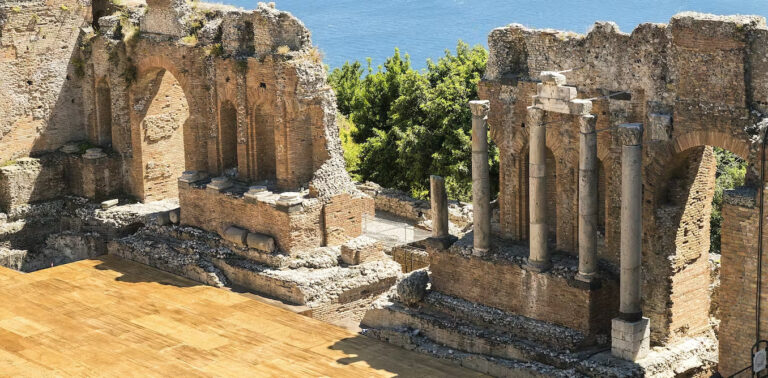The Athens Marathon the Authentic was established to commemorate the historic run of Pheidippides, an Athenian soldier who ran from the battlefield at Marathon to inform his fellow Greeks that the battle had been won.
Why is the ancient Greek man Pheidippides, the greatest runner in world history after whose exploits the concept of the marathon was created, remembered for running the 25 (42km) miles from Marathon to Athens rather than the distance from Athens to Sparta and back?
His much longer journey, as portrayed according to the historian Herodotus, called for Pheidippides running with a military message from Athens to Sparta and back again within an incredible three days. But the version which has Pheidippides traveling more than 300 miles asking for help from the Spartans after which he collapsed as any mortal would makes more sense. Just don’t tell any marathon organizers, who may take on an additional 273 miles to the distance that today’s marathoners have to endure to earn their medals.
Everyone has always known this iconic figure as the man who tragically passed away in 490 BC after bringing the good news in the form of the word “Νενικήκαμεν!,” or “Victory!” to the citadel in Athens after the Persians had finally been defeated.
Part of the problem may be due to the fact that the Marathon to Athens run was brought to the attention of Westerners by way of Robert Browning’s 1879 poem “Pheidippides.”
After reading this inspirational poem, Michel Bréal, a member of the organizing committee for the first Olympics, proposed that the distance between the battle site of Marathon and the Greek capital should be used as the length for the first Olympic marathon when it took place as part of the modern Olympics in 1896.
Pheidippides marathon one for the ages
But the most important historical sources for information on the Greco-Persian Wars, including the greatest of them all, Herodotus, who is known as the Father of History, doesn’t even mention the run from the battle to the city.
His account follows the courier in his journey to Sparta and his return to Athens just before the battle, as he attempted to enlist support for the titanic battle against the Persians—a matter of just over 300 miles. He was also barefoot and carried only a small sword, according to Herodotus.
Some historians over the millennia made parts of both runs into one tale, amalgamating the heroic deeds into one, even adding in that the courier took part in the gigantic battle that occurred between the runs. If that is all true, there is indeed no wonder that the man collapsed and died afterward.
As so often happens with historical occurrences if they are not written down at the time, by the time Pheidippides’ exploits were written about—fifty years after the fact—things got hazy. However, most historians believe that Pheidippides was indeed a real person born in approximately 530 BC and that he was a hemerodrome, or courier, who would run to bring messages from place to place.
Described as an “expert,” Pheidippides is thought to have been in his thirties when tasked with this vital service.
The way from Athens to Sparta taken by Pheidippides
From Athens, the courier must have taken the ancient Iera Odos (“Sacred Road”) to Eleusis, from which he followed a military road called the Skyronia Odos, skirting the Gerania Mountains.
He would have to have run over the mountains between Argolida and Arcadia, through Isthmia, Examilia and the city of ancient Corinth, before coming to Nemea. According to BBC’s “History Extra,” this route would have avoided the territory of Argos, which was not allied with Athens.
On Mount Parthenion, the indefatigable runner has his famous encounter with the god Pan atop the 1,200-meter (3,937 foot) high peak. Pan complains to Pheidippides that the Athenians are not paying his as much fealty as they should. Paying attention to this admonition, the Athenians were sure to construct a temple dedicated to Pan as soon as their victory was complete.
Modern scientists posit that if Pheidippides really did have such a vision it may have been as a result of his extreme physical privations at that point. Endurance athletes are known to also experience such visions. Now termed “sleepmonsters,” they can be extremely realistic.
As this story goes, by the time he reaches the city state of Sparta, in the space of 36 hours, Pheidippides has covered an astounding 153 miles only to be told that the Spartans are busy taking part in a religious festival and cannot be bothered to help the Athenians in their desperate battle against the Persians.
They did, however, promise to fight as soon as the festival was over. The runner has no choice but to return to Athens going the same way that he had come, joining up with the Athenians forces as they all march northeast to Marathon.
Ultimately, the Athenians triumph over the forces of Darius I, who had brought 18,000 to 25,000 soldiers with him, including his fearsome cavalry. The Persians greatly outnumbered the Athenians, who may have had fewer than 10,000 fighting men. General Miltiades is credited with the tactics that finally brought victory to the Athenians, but they were immediately forced to march back to Athens to make sure was defended in case of further Persian attacks there.
So the 25 miles between the cities is then covered by almost all of the fighting men wearing full military gear over the course of one day. It may be unlikely or even physically impossible that Pheidippides could have run the 306 miles from Athens to Sparta and back, taken part in the battle, and then run from Marathon to Athens.
Since he had been given the momentous responsibility of making the earlier trip, if one courier had been tasked with telling the city not to give up if the Persians showed up, it could have been Pheidippides himself. However, most historians today believe that this would have been a physical impossibility and that the courier’s already exemplary exploits didn’t need to be embellished to make the tale more heroic as was the custom in Greek storytelling.
Indeed, the Greek writer Plutarch, in his essay “On the Glory of Athens,” penned five hundred years after Herodotus’ version, has a different courier, named Thersippus (or Eukles) running after the battle from Marathon to Athens. It was fully one hundred years later when the Greek satirist Lucian put the name of Pheidippides onto the tale of the Marathon run back to Athens, making a mishmash of the heroism of both men, but especially that of Pheidippides, who truly gave his last ounce of energy in his monumental exertion.
If the entire fighting force of Athens actually ran the distance from Marathon back home, in full battle gear, that in itself is a feat worthy of being remembered worldwide today. the ultra marathoners of today have nothing on Pheidippides, whose over 300-mile-long desperate journey was frought with dangers and complete exhaustion to the point of deliriousness.
Modern marathoners have this confusion between these events to thank for the fact that they “only” have to run 26.2 miles instead of 306 to win their medals and laurel wreaths.
Source: Greek Reporter







